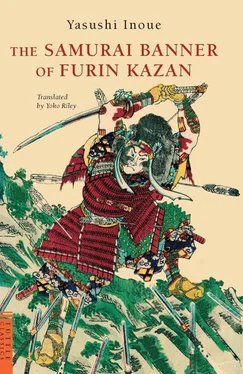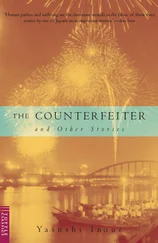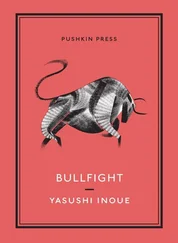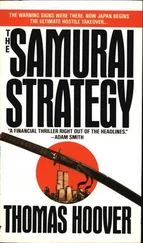The next year, on New Year’s Day, in the third year of Eiroku, a New Year’s banquet was held at the mansion in Kofuchu. Generals from every province gathered to attend. On this occasion, for the first time, Shingen informed his generals of the plan of moving his headquarters to Komuro. Under the expectation of commencing the decisive war against Kenshin, it seemed like quite a logical idea to everyone listening.
Kansuke alone disagreed with the idea.
“Sooner or later, we have to move headquarters, but you should delay the relocation a little longer.”
“How long?” asked Shingen. As usual, he was not very happy.
“Wait until the castle is completed. If the castle is completed by March, you can make your move in March.”
Once Kansuke spoke, he did not change his mind. For anyone listening in on the conversation, it would have appeared like the obstinacy of old age.
As usual, Kosaka Masanobu was sitting there saying nothing.
Kansuke wished that Kosaka would say something to support his suggestion, but Kosaka, in line with his past practices, did not provide any supporting comments.
And yet, after the meeting, Kosaka ran after Kansuke and said, “Thank you very much, sir,” and continued, lowering his voice. “There is a village in Matsui called Gokobuchi. I feel that that is the ideal place to build a castle. I would like you to visit there and see this place at once.” He added, “The land is along the Chikuma River.”
“Is that so?”
“It is perfectly ideal for defensive purposes.”
“What about it’s offensive capabilities?”
“Well, it is not that ideal for that.”
“But if it is a good defensive position…”
“Yes, you would not find any better geographical features than these from the defensive point of view.”
“In that case, it will be fine.”
After a short discussion, they parted.
However, through the spring and into the summer, the Echigo armies intermittently invaded northern Shinano. There was no time to build the castle.
Kansuke could have built the castle whenever he wanted to if it were going to be built on his terms, but he wanted to discuss his ideas with Kosaka and include his ideas and plans as well.
Kosaka simply did not have time to do this.
Kansuke made the journey to northern Shinano twice and examined the hamlet called Gokobuchi in Matsui. As Kosaka had suggested, it would have been impossible to find any better place than this when it came to defense.
It was the hilly areas along the Chikuma River that aided in the defense of the castle. Running from the northwest, it washed over the edge of the precipice and formed a great barrier to anyone invading from Kawanakajima. Over the northern and the northeast areas, mountains such as Mount Kanai, Senbyo, and Ugen were gathered together forming a natural obstacle. Besides this, it was possible to make a back road to retreat to Amakazari Castle. In the east, Mount Kimyo, Horikiri Mountain, and Tate-ishi Mountain towered over the castle-to-be like a folding screen, and they would not allow any mounted warriors to pass through. It was also possible to go to Komuro, their headquarters, through these mountains. To the west the terrain was high and mountainous.
The only open side was the northwestern side that spread out in the direction of Kawanakajima across the Chikuma River.
Kansuke had no objections to building a castle on this land.
All he had to do was to wait for the battles in northern Shinano to settle down, so that Kosaka would have the necessary free time. When Kansuke saw this land, he thought of naming this castle Kaizu 86
Castle, because the current of the Chikuma River was flowing like an ocean and the castle would be built alongside that current.
It was September of that year when they raised the foundations of the castle. Kansuke was determined to build it within three months, working day and night. The situation at the time was so tense that they had to fight against the clock.
As he had planned, by November they were able to complete the castle. Besides the main castle and outer castles, the five towers were built and the Chikuma River and the outer moat surrounded them. The outer moat had a width of forty-seven feet at even the narrowest part. And at the northeastern end of the fortress, they built a shrine and brought in the divine spirit of Hachiman shrine 87in Kongo. 88
Since Kansuke was responsible for the building of the castle, Shingen ordered him to name it. As he had originally decided, he named it Kaizu Castle. As soon as the castle was built, Kosaka moved into it from Amakazari Castle as its representative. Oyamada Masatatsu, instead, replaced Kosaka in Amakazari castle.
The day Kosaka entered Kaizu Castle, Takeda Shingen, who had been stationed in Komuro for over a month, came to see it along with Kansuke. Kosaka, as the guide, Shingen and Kansuke climbed up onto the lookout tower at the northwest corner of the main castle. The field surrounding the Kawanakajima, which was considered to be the location of the decisive battle for both Echigo and Kai, spread out before their eyes. The flow of the River Sai divided the field in two with its gentle curve.
In late autumn, the three of them looked down upon the field, each one with a totally different emotion. Kansuke knew exactly where Kosaka was looking. The field, which was reflected in his eyes, did not bring positive thoughts to his mind.
Kansuke had different thoughts. While he was building this castle, he had had the same idea as Kosaka, but now that the castle was near completion, his idea had changed.
Suddenly the question of what the commander-in-chief of the enemy, Uesugi Kenshin, would think of this castle entered his mind. The fact that the Takeda built this castle right before the commencement of the war must have caused some reaction in Kenshin. The fact that a castle was built right here had changed the meaning of every single tree and blade of grass on the field.
Kansuke’s eyes started to shine as they always did whenever he stood on a castle tower. He had to win, he thought.
Then suddenly Shingen opened his mouth, “None of the castles in this country could match this castle,” he said quietly.
“Pardon me?” Kansuke asked.
“This will be an ideal castle to view the moon. Yes, the moonlight. How about having a banquet here every year under the moonlight.”
When they thought about it, indeed, the view of the moon from here had to be the most beautiful sight they had ever seen.
Kansuke felt so proud of his master. He was so impressed by his great personality that he was thinking of absolutely nothing concerning war, rather viewing the moonlight, when everybody was expecting him to focus only on strategy.
Kosaka was thinking of how best to call in the warriors in the event of a defeat. Kansuke was thinking of a strategy — no matter what the outcome or the situation called for, he had to turn this battle into a victory. Meanwhile, Shingen was thinking of a banquet under the moon.
Chapter 12. PREPARE FOR BATTLE
IT WAS THE FOURTH YEAR of Eiroku. Kenshin postponed the battle against Shingen and turned his spearhead toward the Hojo in Odawara. 89On New Year’s Day, Kenshin was at the forefront, Umayabashi Castle and sent orders not only to the generals of the eight provinces in Kanto, 90but also to several generals from Oou, 91which was outside the province of Kanto, to join this campaign.
As soon as Shingen received this news in Kofuchu and realized the seriousness of the situation, he ordered his generals to assemble in Kaizu Castle.
If Kenshin destroyed the Hojo, it was quite obvious that his power would double and triple through a single battle. And it was clearly possible that, using the momentum of a victory, Kenshin would force his way into the Takeda’s districts, Kai and Shinano.
Читать дальше












